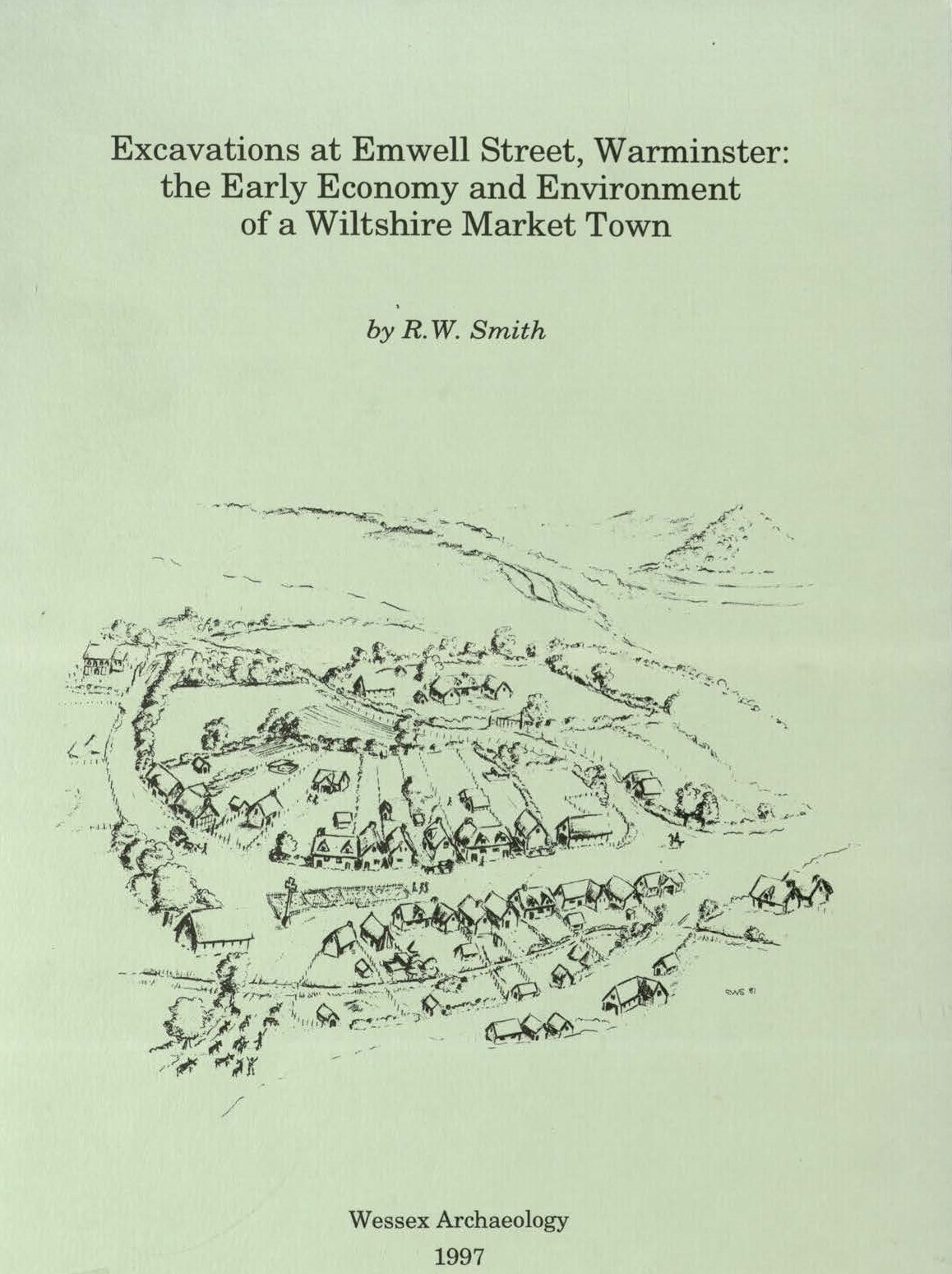Excavations at Emwell Street, Warminster: the Early Economy and Environment of a Wiltshire Market Town
R.W. Smith

Description
Excavations during 1979 on the fringes of Saxon Warminster have revealed evidence which suggests that the town's origins will eventually be traced to a nearby late Roman or early Saxon farmstead. Environmental studies illustrate how this primary settlement expanded into its surrounding landscape. Initially stock rearing and dairying appear to have been particularly important but from the 11th century onwards, the emphasis progressively moves towards 'sheep and corn' husbandry so typical of the medieval chalklamis.
Urban development, initiated in late Saxon times, impinged on the excavated site during the 11th century when Emwell Street was almost certainly a back street to the early urban quarter of the town. Activities taking place in the area during the medieval period include the smelting and forging of iron, butchery, and perhaps leather working and potting.
By AD 1300 most of the town's commerce had shifted to a new, formally laid out, market area. Redundant in its former role, Emwell Street attracted some residential development, but sloping topography and a susceptibility to winter flooding appears to have inhibited most further building until the post-medieval period. The site produced an important assemblage of medieval pottery from the Crockerton kilns.
Details
| Published | Published By | Pages | ISBN | ||||||||||||||||||||||||||||||||||||||||||||||||||||||||||||||||||||||||||||||||||||||||||||||||
|---|---|---|---|---|---|---|---|---|---|---|---|---|---|---|---|---|---|---|---|---|---|---|---|---|---|---|---|---|---|---|---|---|---|---|---|---|---|---|---|---|---|---|---|---|---|---|---|---|---|---|---|---|---|---|---|---|---|---|---|---|---|---|---|---|---|---|---|---|---|---|---|---|---|---|---|---|---|---|---|---|---|---|---|---|---|---|---|---|---|---|---|---|---|---|---|---|---|---|---|
| Jan. 1, 1997 | Wessex Archaeology | 63 | 1-874350-23 | ||||||||||||||||||||||||||||||||||||||||||||||||||||||||||||||||||||||||||||||||||||||||||||||||
| License Information | |||||||||||||||||||||||||||||||||||||||||||||||||||||||||||||||||||||||||||||||||||||||||||||||||||
| Copyright © Wessex Archaeology. This work is openly licensed via CC BY-NC-ND 4.0 | |||||||||||||||||||||||||||||||||||||||||||||||||||||||||||||||||||||||||||||||||||||||||||||||||||
